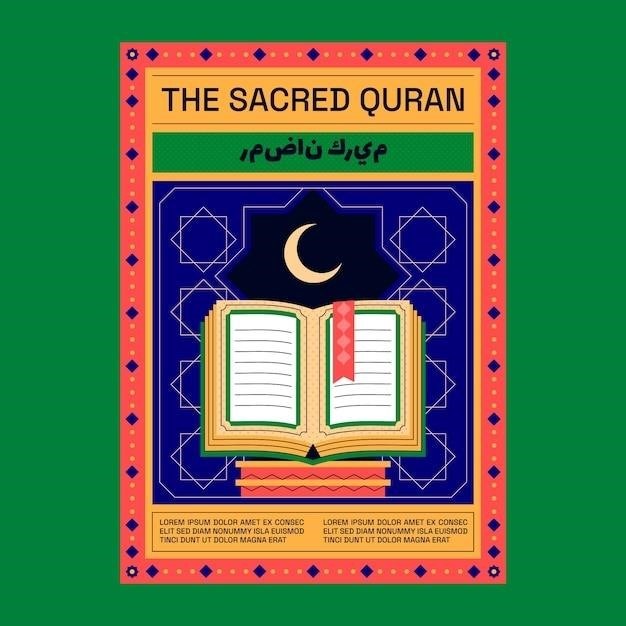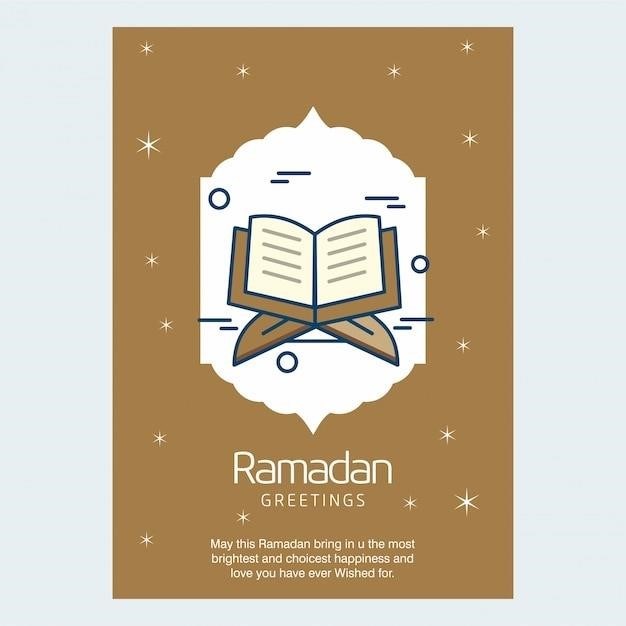Balloon Modelling Instructions⁚ A Comprehensive Guide
This guide offers comprehensive instructions for balloon modeling, including creating various balloon animals (dogs, rabbits, swans, giraffes), constructing complex structures like bumper cars and chandeliers, and mastering fundamental twisting techniques. Downloadable PDFs with step-by-step tutorials are available for many projects. Several resources for further learning are also provided.
Basic Balloon Twisting Techniques
Mastering fundamental balloon twisting techniques is crucial for creating impressive balloon sculptures. Begin by inflating your balloons, leaving a small, uninflated portion at the end for tying a knot. This uninflated portion provides the necessary space for manipulation and twisting. The most common technique involves creating twists by rotating one section of the balloon against another, creating distinct segments. This forms the basic building blocks for all balloon creations. Practice creating simple twists and double twists, ensuring a firm grip to avoid accidental pops. Remember, consistent pressure and a smooth twisting motion prevent balloon breakage. Experiment with different balloon sizes and types to find your preference. Learn to create basic shapes like loops and bubbles. These foundational skills will lay the groundwork for more complex balloon animals and structures. Many online resources, such as video tutorials and downloadable PDF guides, provide detailed illustrations and step-by-step instructions for practicing these fundamental techniques. With consistent practice, you’ll rapidly improve your twisting skills and create impressive balloon art.
Creating Simple Balloon Animals (Dog, Rabbit, etc.)
Once you’ve mastered basic balloon twisting, you can progress to creating simple balloon animals. Start with designs that utilize only a few twists, such as a basic three-twist dog or a simple rabbit. Numerous free PDF tutorials are available online, providing clear, step-by-step instructions and diagrams. These guides often break down the creation process into manageable steps, making it easy for beginners to follow along. Pay close attention to the size and placement of each twist to ensure accurate shaping. Remember to leave enough uninflated balloon at the end for secure knotting. For a three-twist dog, for example, you’ll learn to create the body, head, and ears using a series of twists and bends. Don’t be discouraged if your first attempts aren’t perfect; with practice, you’ll improve your ability to create well-proportioned and visually appealing animals. Online videos can also be very helpful in visualizing the process. Experiment with different colors and balloon types to add creativity to your creations. Soon, you’ll be creating a menagerie of adorable balloon animals.
Advanced Balloon Sculpting⁚ Swans and Giraffes
After mastering basic animal shapes, challenge yourself with more intricate balloon sculptures like swans and giraffes. These designs require a higher level of skill and precision in twisting and shaping. You’ll need to utilize a greater number of twists and pay close attention to the proportions of each body part. Detailed PDF tutorials are essential for these projects, providing visual guidance through complex steps. These tutorials often include multiple diagrams and close-up shots to clarify tricky techniques. Creating a swan, for instance, might involve creating a curved neck and detailed wing structures. Similarly, constructing a giraffe requires precise shaping of the long neck and legs while maintaining balance. Practice is key to mastering these advanced techniques; don’t hesitate to review the instructions multiple times or even rewind instructional videos. Consider using high-quality balloons that are less prone to bursting during complex maneuvers. As your skills improve, experiment with adding decorative elements or incorporating multiple balloon colors to enhance your creations. The satisfaction of successfully completing a complex balloon sculpture is immensely rewarding.
Balloon Animals PDF Tutorials⁚ Step-by-Step Guides
Numerous websites and online resources offer downloadable PDF tutorials for creating a wide array of balloon animals. These PDFs typically provide clear, step-by-step instructions, often accompanied by helpful diagrams and illustrations. They break down complex processes into manageable steps, making them ideal for beginners and experienced balloon twisters alike. Many tutorials cater to different skill levels, offering simplified versions for simpler animals like dogs or rabbits, and more advanced guides for swans or giraffes. The visual aids within these PDFs are invaluable, especially for understanding the precise twists and turns required for accurate shaping. Look for tutorials that provide clear, high-resolution images and detailed descriptions of each step. Some PDFs even include tips and tricks from experienced balloon artists, offering insights into techniques and troubleshooting common problems. These downloadable guides allow for convenient access to instructions whenever needed, and offer a valuable resource for practicing and refining your balloon twisting skills. Remember to check for reputable sources to ensure accurate and high-quality instructions.
Constructing Complex Balloon Structures⁚ Bumper Cars and Chandeliers
Moving beyond simple balloon animals, creating intricate structures like bumper cars and chandeliers presents a rewarding challenge for balloon artists. These projects demand a higher level of skill and precision, requiring mastery of various twisting techniques and a strong understanding of balloon structure and stability. Detailed PDF tutorials are available online, guiding users through the construction of these elaborate designs. These tutorials often involve multiple balloons, various sizes, and specialized techniques to ensure structural integrity and visual appeal. The process typically begins with creating the base structure, followed by the careful addition of individual components. Understanding how to properly join and secure balloons is crucial to avoid collapses or unintended deformations. Creating these complex structures necessitates careful planning and execution, often requiring multiple practice attempts to perfect the techniques. The payoff, however, is the creation of impressive and visually striking displays that showcase the artist’s skill and creativity. Remember to always prioritize safety when working with large numbers of inflated balloons.
Essential Tools and Materials for Balloon Modelling
Success in balloon modeling hinges on having the right tools and materials. High-quality balloons are paramount; choose balloons specifically designed for twisting, as they are more durable and less prone to popping. Different sizes and colors allow for creative versatility. A balloon pump is highly recommended; hand-inflating many balloons can be tiring and may lead to inconsistent inflation. A sharp pair of scissors is useful for trimming and shaping balloons, while a ruler or measuring tape helps ensure consistent balloon lengths. For intricate designs, consider using balloon clips or ties to secure sections and maintain the overall structure. Having a clean, organized workspace is also essential. A large, flat surface provides ample space to lay out your balloons and tools, preventing accidental pops or tangles. Optional accessories include a variety of balloon colors to enhance your creations, and perhaps some instructional PDFs or videos to guide you through more advanced techniques. Remember, proper tools and preparation significantly impact the final product’s quality and overall aesthetic appeal.
Balloon Modelling for Beginners⁚ A Step-by-Step Approach
Starting your balloon modeling journey is easier than you think! Begin with fundamental twisting techniques. Practice inflating balloons evenly, leaving a small uninflated portion at the end for tying. Master the basic twist, creating a simple loop by twisting a section of the inflated balloon. Then, try making a double twist, creating two adjacent loops. Many introductory PDFs and online tutorials demonstrate these steps. Once comfortable, progress to simple shapes like hearts and swords. These projects require only a few twists and are perfect for building confidence. Remember to always start twisting at the knotted end of the balloon. As you improve, challenge yourself with slightly more complex animal designs. Start with a three-twist dog or a similar simple animal shape. Many free, downloadable PDFs are available online, providing visual guidance and step-by-step instructions. Patience and practice are key. Don’t be discouraged by initial imperfections; each attempt improves your skills. With dedication, you’ll soon be creating impressive balloon sculptures. Enjoy the process of learning and creating!
Troubleshooting Common Balloon Modelling Problems
Balloon modeling, while fun, presents occasional challenges. One common issue is balloon breakage. This often stems from over-inflation or using damaged balloons. Always inflate balloons gently, leaving a small uninflated section. Inspect balloons before use for any flaws. Another problem is uneven twisting, leading to lopsided creations. Practice consistent pressure and twisting technique. Watch tutorial videos to perfect your form. Sometimes, balloons become too difficult to twist. This usually indicates insufficient inflation. Ensure proper inflation before beginning a project. If your balloons pop frequently, consider using higher-quality, thicker balloons designed specifically for modeling. If you find your creations are too flimsy or prone to collapsing, you might be twisting too loosely. Try twisting sections more tightly, ensuring secure connections. For complex designs, having a helper can ease the process and prevent accidental breakage. Remember that practice makes perfect. Don’t be afraid to experiment and learn from your mistakes. Many online resources and downloadable PDFs address common issues. Consult these materials for additional troubleshooting tips and tricks.
Free Balloon Modelling PDFs⁚ Resources and Downloads
Numerous websites offer free downloadable PDFs containing balloon modeling instructions. These resources provide step-by-step guides, diagrams, and illustrations for creating various balloon sculptures. Many PDFs focus on beginner-friendly projects, teaching fundamental twisting techniques before progressing to more complex designs. You can find free PDFs covering a wide range of balloon animals, from simple dogs and rabbits to more intricate swans and giraffes. Some PDFs offer instructions for constructing elaborate balloon structures, such as bumper cars or chandeliers, providing detailed diagrams and explanations. These free resources often include tips and tricks for troubleshooting common problems, ensuring you achieve successful results. To access these PDFs, search online using keywords like “free balloon animal patterns,” “balloon twisting tutorials PDF,” or “balloon modeling instructions PDF download.” Many professional balloon artists and hobbyists share their creations and techniques through free downloadable content. Remember to check the source’s credibility before downloading any files. Look for websites with positive reviews or recommendations from other users. Enjoy the wealth of free resources available to enhance your balloon modeling skills.
Where to Find More Balloon Modelling Instructions
Balloon Modelling Resources⁚ Websites and Communities
Numerous online platforms offer invaluable resources for balloon modeling enthusiasts. Websites dedicated to party supplies often include sections with free downloadable PDF instructions for various balloon creations, ranging from simple animals to complex structures. These websites frequently showcase different balloon artists’ work, providing inspiration and ideas for personal projects. Online marketplaces like Etsy host independent artists selling digital balloon modeling patterns and templates. These downloadable resources often include detailed instructions and diagrams, catering to both beginners and experienced balloon twisters. Social media platforms, such as YouTube, Instagram, and Facebook, are filled with communities and groups focused on balloon art. These platforms offer a wealth of video tutorials, showcasing techniques from simple twists to intricate sculptures. Members often share their creations, ask questions, and offer advice, fostering a collaborative learning environment. Dedicated balloon artist websites often provide instructional videos and downloadable PDFs, offering in-depth guidance on specific techniques and designs. These resources often cover a broad range of skills, from basic twisting to advanced sculpting. By actively engaging with these online communities and resources, balloon modeling enthusiasts can continuously expand their skills and knowledge, staying updated with the latest trends and techniques.


























